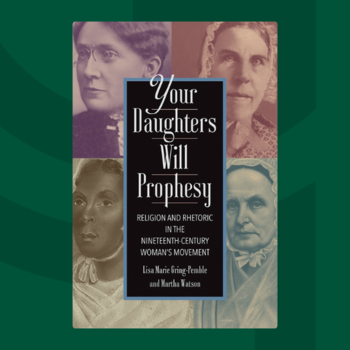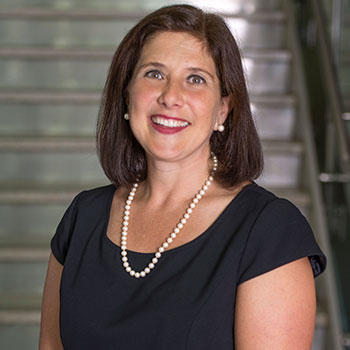In This Story
In the United States, the struggle for women’s rights began under a spiritual cloud. Nineteenth-century American women’s subordinate place in society was solidly reinforced by a style of Biblical interpretation and social constraints that historian Barbara Welter called “the cult of True Womanhood”. Women’s place was thought to be in the home—public speaking and political or social activism were closed off.
A new book co-authored by Lisa Gring-Pemble, associate professor of business foundations at the Donald G. Costello College of Business at George Mason University, explores the overlooked history of how women reformers strategically used religion to carve out a public role for themselves. Gring-Pemble’s co-author is Martha Watson, Dean Emerita of the Greenspun College of Urban Affairs and an Episcopal priest currently serving in the Washington, D.C., area.

Your Daughters Will Prophesy: Religion and Rhetoric in the Nineteenth-Century Woman’s Movement (University of South Carolina Press), details how American women used scripture to gain access to the platform and pulpit. They developed what scholars today would call a “feminist hermeneutic”. That is, they reinterpreted familiar biblical passages, recovered previously ignored stories about women, and contested passages used to circumscribe their activities. Speaking as Christians to an almost completely Christian audience, they made careful rhetorical choices that redeployed spiritual language and symbolism to counter gendered restrictions.
Gring-Pemble, a rhetorical critic, has long been interested in the early woman’s movement. She says, “I wrote an article in graduate school about the correspondence between Antoinette Brown Blackwell and Lucy Stone, and it made me think about the origins of social movements…It was unseemly for women to speak in public, or play any role in public life. So how did women find one another? How did they come to see each other as agents of change?”
The four texts that anchor the book — Jarena Lee’s Journal, Sarah Moore Grimké’s “Letters on the Equality of the Sexes,” Lucretia Coffin Mott’s “Discourse on Woman,” and Frances Willard’s Woman in the Pulpit— were selected quite deliberately.

“The focus of the book was tracing the trajectory of an argument through four key texts,” Gring-Pemble says. “We were interested in how women developed arguments around Scripture, and how Scripture could be reinterpreted, how they could reclaim stories of women who had been forgotten or ignored.”
For example, both Grimké and Mott combated sexist interpretations of Scripture by citing biblical examples of divinely inspired women exercising moral agency, such as Miriam, Moses’s sister; Deborah, the sole woman among the twelve Judges in the Old Testament; and Huldah, a prophetess who advised King Josiah.
Gring-Pemble says she was fascinated by how each woman evolved her own rhetorical approach based on her individual identity. “The woman’s movement was initially not united around the issue of suffrage; rather, women in the 19th century, much like contemporary women supported a wide range of socio-political and economic issues,” she observes. “I think the idea that women are somehow the same or that there is a woman’s movement the unifies all women is misleading, there is no historical precedent for that.”
As the first African-American woman to “preach” within the African Methodist Episcopal Church, Jarena Lee never argued for women’s equality but rather for the idea that God could call certain women to preach the gospel. Positioning her autobiography as a “journal,” a form familiar to Methodists, Lee patterned her life story upon Biblical themes of the call to prophecy that would be immediately recognized by Methodists.
Grimké, a Quaker and abolition activist, developed a fully formed method of interpreting scripture to argue that Christian women had a moral obligation to engage in reform efforts. And Mott, a Quaker minister, leader in abolition, and one of the organizers of the first meeting (Seneca Falls) to discuss women’s rights, demonstrated how women could make positive contributions to public life and maintain their femininity.
Frances Willard, president of the Women’s Christian Temperance Union, used her public platform to argue for the right of women to preach, among many other rights. She skilfully brought thousands of women, into the suffrage movement under the banner of “home protection.” “Willard frequently referred to suffrage as ‘home protection’,” says Gring-Pemble, “which appealed to more conservative women. She believed that men and women were different, but argued that you needed the unique contributions of both men and women in order to understand our spiritual purpose on this planet.”
What united all four, however, was their masterful use of dissent and prophetic rhetoric, marshalled toward reformist ends. For Gring-Pemble, that theme is what links their stories to the present-day efforts of reform movements.
“The strategy of dissent, of working from within to push change, is still incredibly relevant. The idea of assuming a prophetic voice, about seeing what is possible for us all to live the best version of ourselves, is still a powerful argument.”
